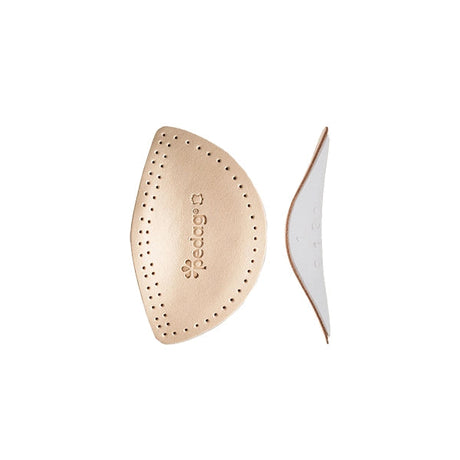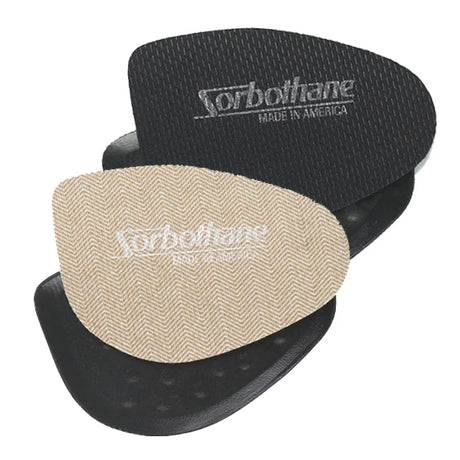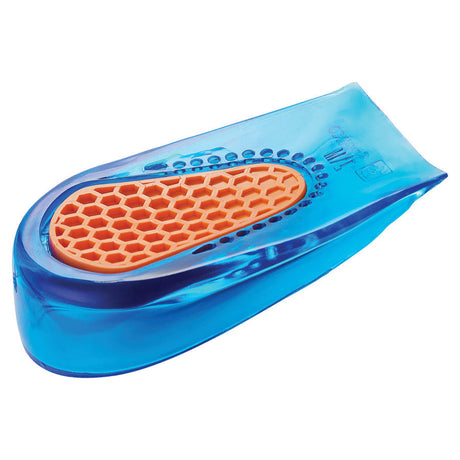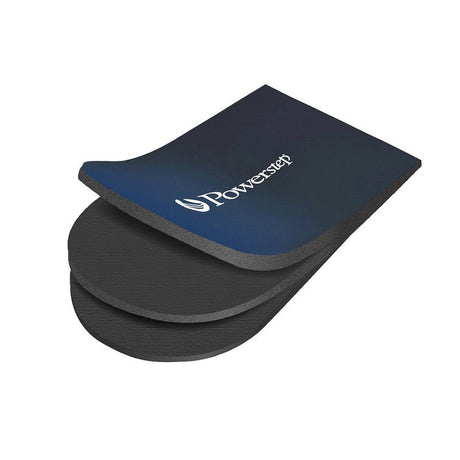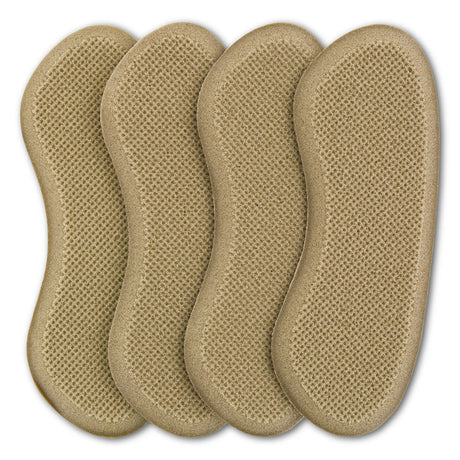Insert Pieces
You're currently browsing our entire selection of insert pieces. Narrow your search by selecting one of the below categories, or by using our product filters. Contact us if you have any questions or if you would like a product recommendation.
Categories
About Insert Pieces
When would I use a shoe insert?
When would I use a shoe insert?
If you have discomfort or need additional support for a particular part of your foot, but otherwise have no general problems or discomfort elsewhere on your foot, a shoe insert may be a more cost-effective solution versus purchasing an insole.
For example, if you have a lot of soreness in the heels of one or both feet after being on your feet for several hours, but otherwise your feet feel fine, you might consider purchasing a heel cushion to provide a little extra support and cushioning instead of finding a new insole to achieve the same goal.
What are arch support inserts?
What are arch support inserts?
Arch support inserts are placed where the arch of your foot normally rests on your insoles and will provide additional support for the arch of your foot.
Arch support inserts come in a variety of shapes, sizes, and materials so that you can find a solution that works best for you. Gel arch inserts provide more cushioning, whereas a more rigid arch support insert would provide more support.
What are ball-of-foot cushions?
What are ball-of-foot cushions?
Ball-of-foot cushions are padded cushions, most often made of foam or gel, designed to provide additional cushioning for the ball of your foot beyond what your shoes and insoles already provide.
Ball-of-foot cushions are placed where the ball of your foot (located on your forefoot, just before your toes) rests and will provide additional cushioning for your forefoot wherever you need it most.
What are metatarsal pads?
What are metatarsal pads?
Metatarsal pads are slim, cushioned pads, often made of foam, designed to be placed under the metatarsals of the foot near the arch to help provide cushioning and support.
Metatarsal pads are generally placed between the arch of your foot and the ball-of-foot, near where the metatarsal bones connect to the arch of the foot. The pad will provide some lift and cushioning for the metatarsal bones, helping to provide extra support and comfort.
What are heel cushions?
What are heel cushions?
Heel cushions (also sometimes called heel cups or heel pads) sit under the heel of your foot and provide additional cushioning for the heel of your foot.
Heel cushions are most often made of foam or gel, both of which will provide excellent cushioning for the heel of your foot. "Pad" style heel cushions are generally flat, whereas "cup" style heel cushions are made for your heel to fit into and will cradle the heel of your foot. The "pad" vs. "cup" naming convention isn't always standard across all manufacturers, however.
What are anti-slip inserts?
What are anti-slip inserts?
Anti-slip inserts (sometimes called grips or anti-slide inserts) are inserts made of a grippy material that help prevent the foot from sliding around or slipping out of your shoe when wearing footwear.
The most common usage for anti-slip inserts is to prevent heel slippage when wearing shoes by placing anti-slip pads around the back of the shoe near the ankle. The pads help to prevent the heel from lifting upwards out of the shoe when walking.
Anti-slip inserts come in many shapes and sizes and can be used wherever needed inside your shoes.
What are heel lifts?
What are heel lifts?
Heel lifts are wedge-shaped pads designed to be placed under the heel of your foot to elevate the heel of the foot.
Many heel lifts are designed to be customizable to allow for a very specific amount of lift. These types of adjustable heel lifts are designed so that the insert is made up of multiple layers, which can be removed or added to provide the angle and height that is most comfortable for you.
When would I need a heel lift?
When would I need a heel lift?
Heel lifts can accomplish a few key goals that many insoles, shoes, and other foot support items cannot. Namely, heel lifts elevate the heel, unlike most shoes and insoles, which can help with the following:
- Alleviating discomfort from Achilles tendinitis by elevating the heel of the foot to relieve strain on the Achilles tendon.
- Alleviating discomfort from leg length discrepancies by elevating the heel of one foot so that both hips are aligned.
How are shoe inserts sized?
How are shoe inserts sized?
Unlike most shoe insoles, which are sized based on your footwear size, shoe inserts generally come in a Small/Medium/Large sizing system or a one-size-fits-most size.
To help determine which size would work best for you, and to help you determine whether a single-size option would work for you, we also list which shoe sizes the insert tends to work best for in the size selection/product details for our shoe inserts.
How do I know where to place a shoe insert in my shoes?
How do I know where to place a shoe insert in my shoes?
There is no wrong answer to how and where you place a shoe insert inside your shoes, with the exception of heel cushions and heel lifts which should always be placed towards the back of the heel.
Ball-of-foot cushions, metatarsal pads, and arch support inserts can all be placed inside the shoe wherever you find them to be the most comfortable. If you're unsure where to place them, remove the insole from your shoe and place it on the ground, then place the shoe insert where you think it should go and step on the insole. You can move the insert around while doing this to see where it feels the most comfortable.
Whether the insert is placed on top of or beneath your shoe insole is generally up to you unless the manufacturer specifies otherwise, but in general we have found that it's most comfortable and effective to have the shoe insert placed on top of the shoe insole where possible, with the exception of heel lifts which should generally be placed beneath the insole.
What happens if I'm not 100% sure I'll like my new inserts?
What happens if I'm not 100% sure I'll like my new inserts?
Great question! It can take a few weeks to fully know whether or not a new insert is performing the way we'd like it to or not. We and many of the brands we carry understand this, and most shoe inserts are covered by what we call a "Wear Test Guarantee": If you buy an insert, try it, and it simply isn't working for you, you're more than welcome to return or exchange it.
We strongly recommend trying your shoe inserts for a few weeks before making your final determination on how well it works. In many cases, it can take a full week or more to feel the effects of a new insert on foot comfort.

